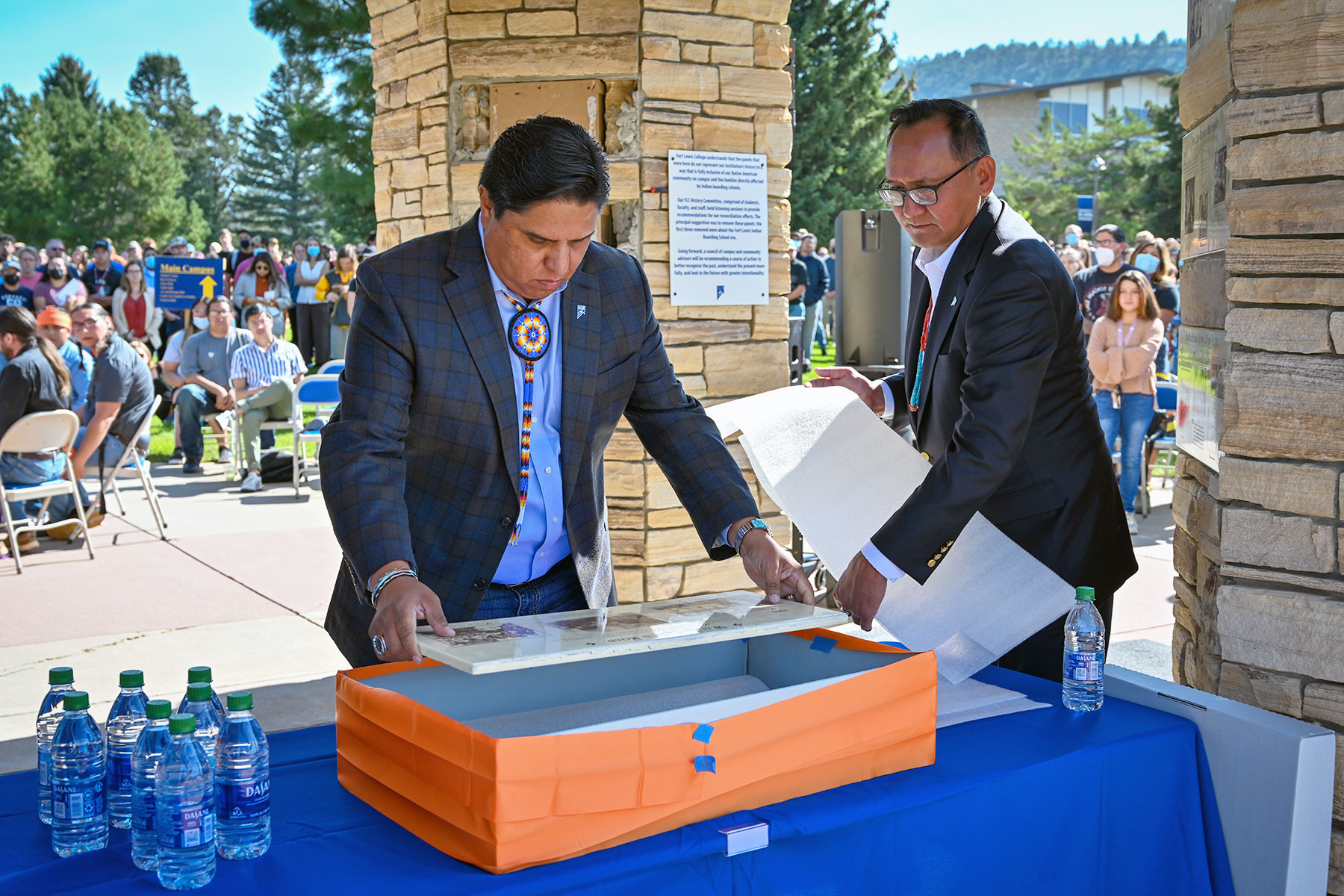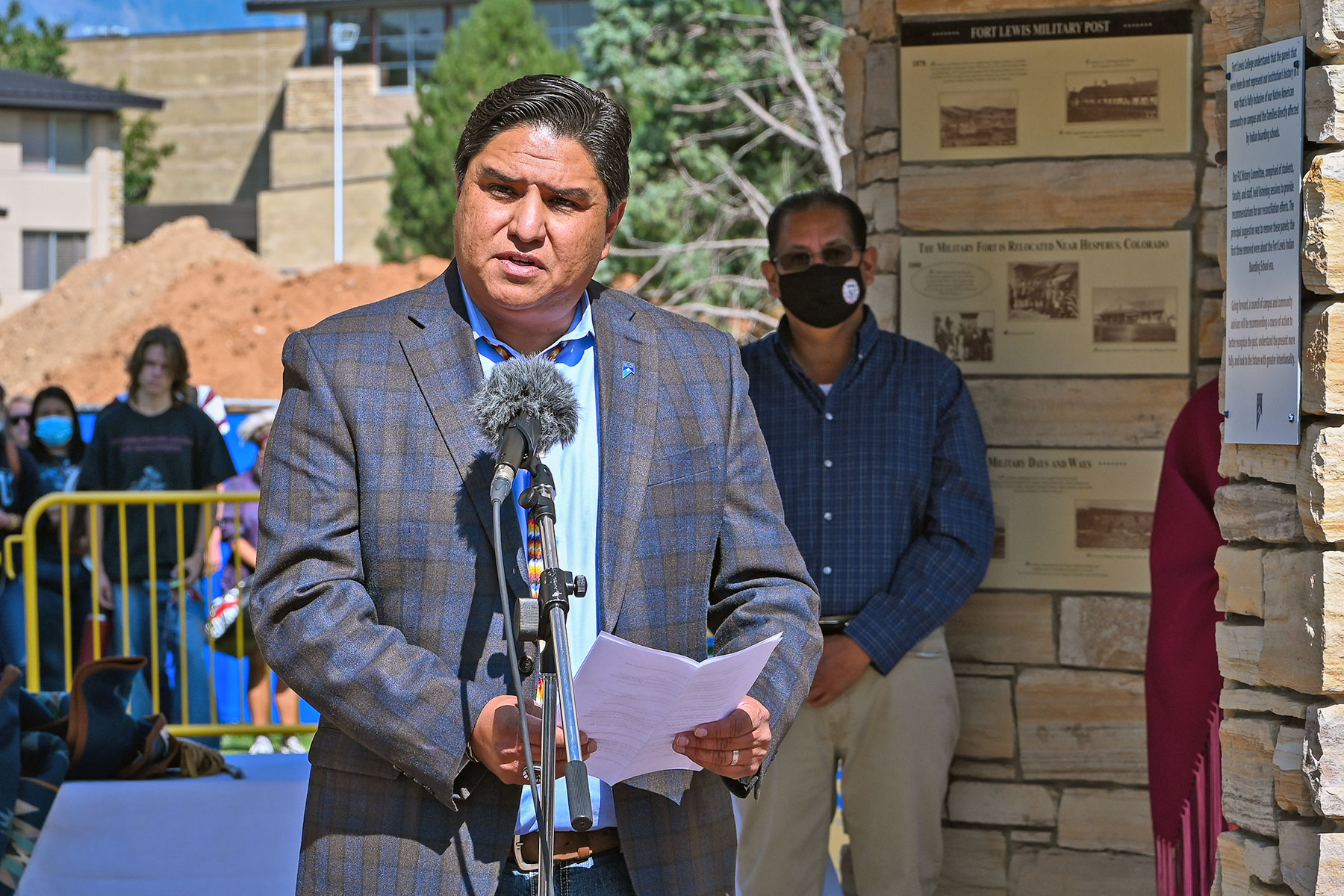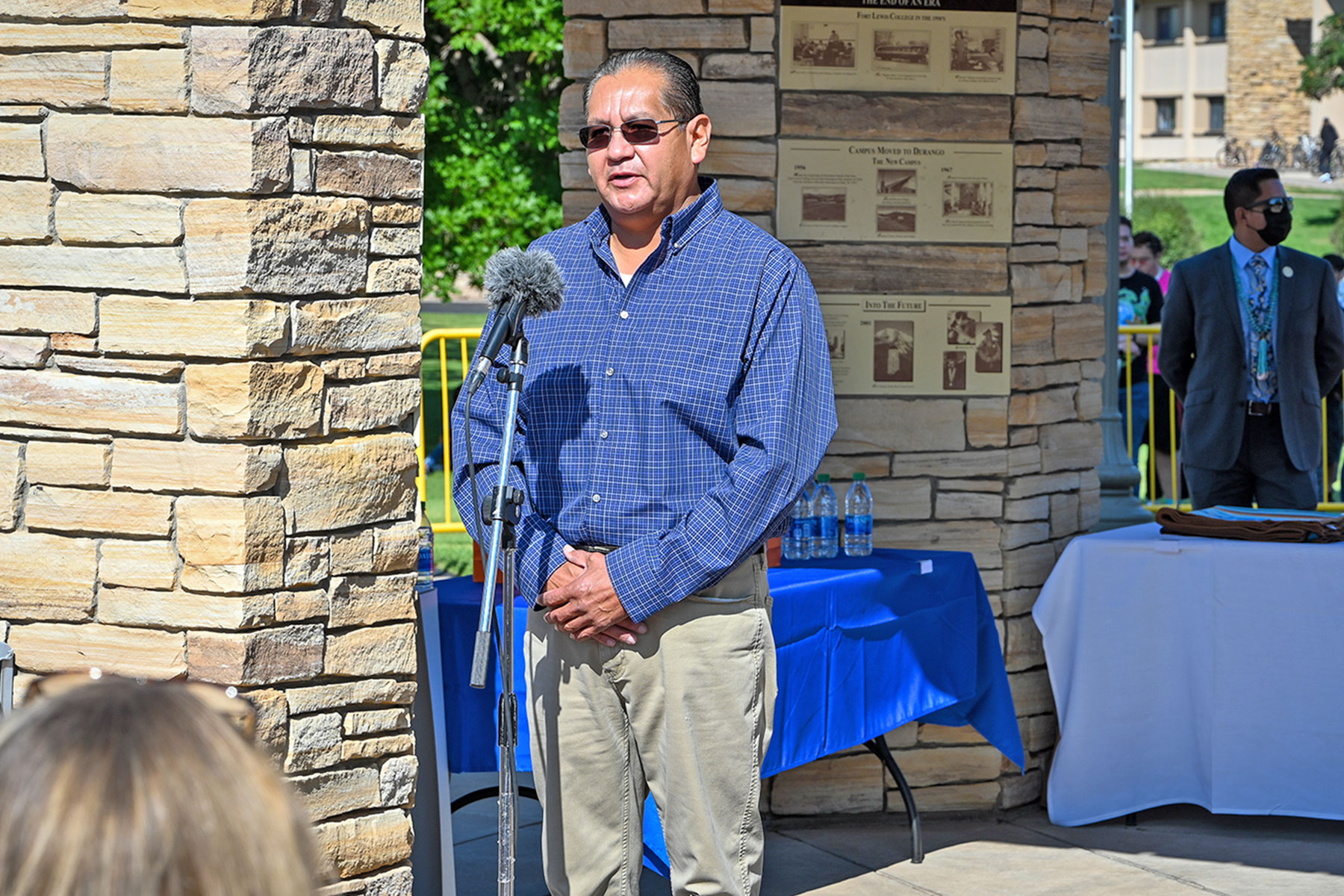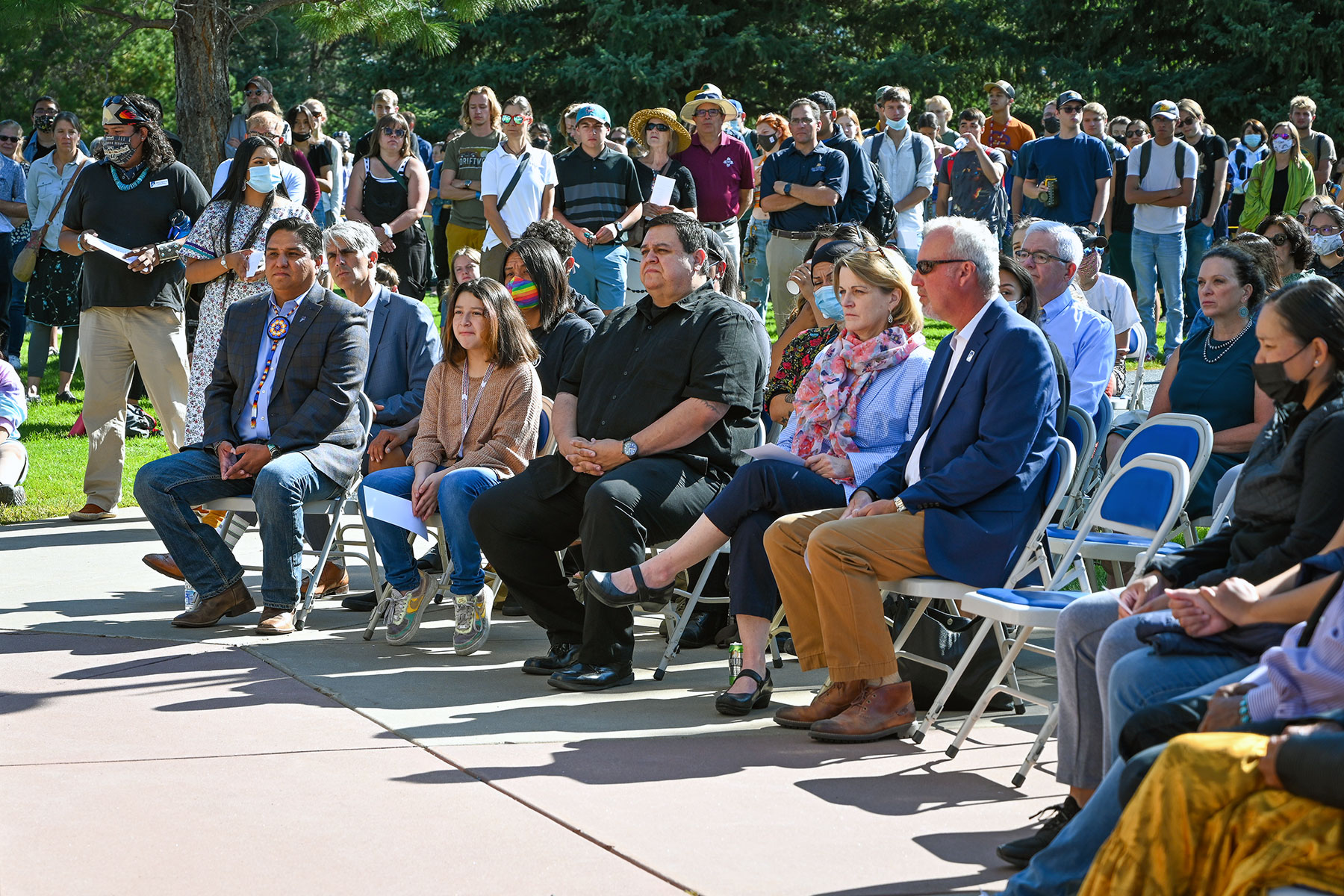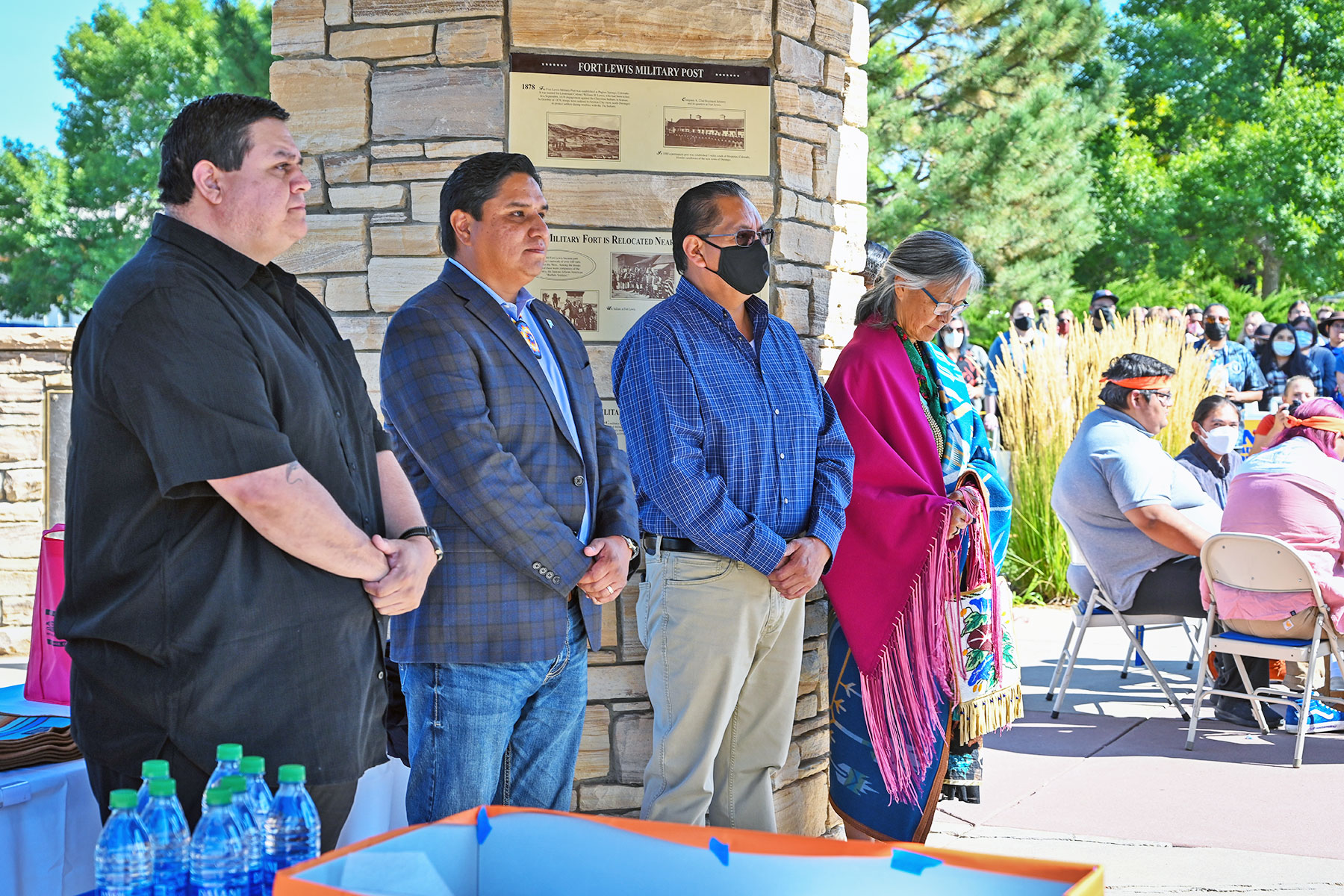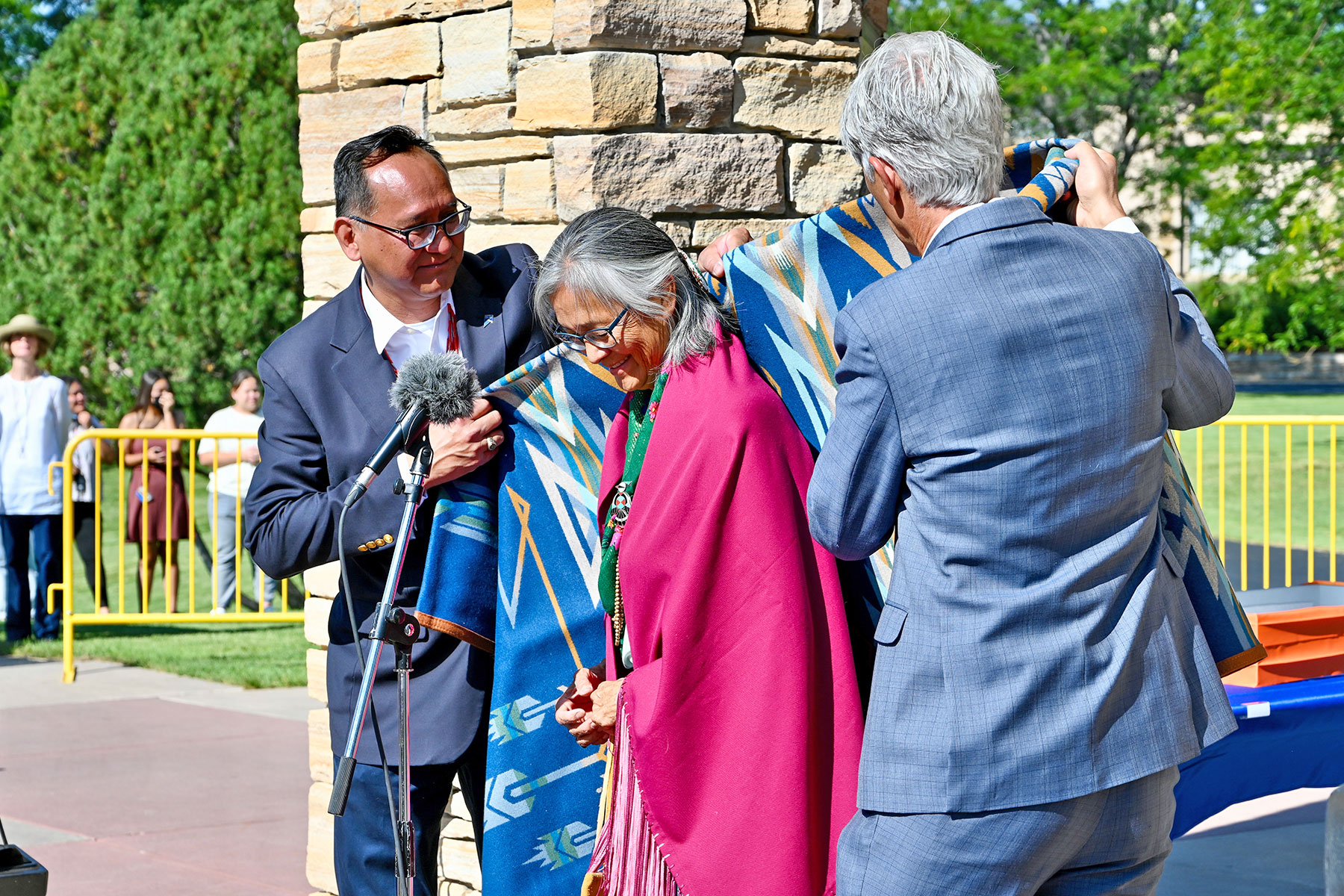Hundreds of community members, students and college alumni gathered at Fort Lewis College in Durango, Colo. on Monday, Sept. 6 to witness the ceremonial removal of the Fort Lewis College Indian Boarding School panels that were installed onto the beams of the clocktower that sits centrally on campus. The panels were removed because they depicted inaccurate and disrespectful historical experiences of the Indian Boarding School era.
“The panel removal was a great event, and it will continue to spark the ongoing conversation that has been happening nationally about boarding schools,” Fort Lewis College Board of Trustees member, Ernest House Jr. stated. “Hopefully there will be a more accurate portrayal and depiction of what happened, that the goal back then was assimilation of Native Americans into the Western society and how that directly relates to intergenerational traumas.”
From the late 1880s until 1920, the Federal Indian Policy of Assimilation was created to destroy traditional Indian cultural identities. By utilizing boarding schools, the United States had hoped to solve the “Indian Problem” by forcibly removing Indian children from families. In 1880 the Fort Lewis U.S. Army post had been relocated to Hesperus, Colo. from its original site near Pagosa Springs, Colo. It was decommissioned in 1892 where it became the Fort Lewis Indian School. The fort was only one of two-dozen off reservation boarding schools that existed in the 1800s where children from the Mescalero Apache tribes, Jicarilla Apache, White Mountain Apache, San Carlos Apache, Papagos, Pimas, Navajo and Ute tribes attended school.
As the federal government pushed for the assimilation of Native children, boarding schools like Fort Lewis forbid the use of Indigenous languages and children were told to abandon their culture. Though schools like this used extreme tactics and devastating methods to achieve this, they ultimately failed to terminate Indigenous cultures.
“It’s important that we don’t shy away from the history, that we don’t sweep it under the rug, we want to deal with it directly,” House said.
The Fort Lewis Indian School ceased operations in 1910. The property and buildings in Hesperus were transferred over to the state of Colorado where it was established as an “agricultural and mechanic arts high school.” That deed came with two conditions: that the land would be used for an educational institution and was “to be maintained as an institution of learning to which Indian students will be admitted free of tuition and on an equality with white students” in perpetuity (Act of 61st Congress, 1911). Both conditions have been the Fort Lewis school’s missions and guides over the past century.
“[Looking back] at a time where they were creating cultural genocide — we’ve come a long way to now see a third of our student population being Native American; where over 170 different tribes are represented, and the fact that wearing traditional regalia in place of a cap and gown is the norm is so powerful to witness.”
In 2008, Fort Lewis College was designated as one of six Native American-serving, non-tribal colleges by the U.S. Department of Education. The institute’s unique origins as a military fort turned Indian boarding school turned state public school, has helped them standout, today the institution awards more degrees to Native American students than any other four-year, baccalaureate-granting school in the nation. Fort Lewis College maintains a federal designation as a Native American-Serving Non-Tribal Institution (NASNTI) as over 10% of the student body is Native American.
The 1911 mandate to provide a tuition-free education for qualified Native Americans has awarded about 26% of all degrees to students—tuition free as a continuing legacy of the Indian Boarding School era.
Through the guidance of tribal leaders and students, the removal of these panels is one step in the right direction to acknowledging the traumas that were invoked by the experiences in the old Indian School. Now the healing process can begin for families, students and community members that affiliate themselves with Fort Lewis College.
“I want to recognize the past and current tribal leadership that have spent years advocating and laying the groundwork for developments like this—what we’re seeing today is the success of those tribal leaders, elders and change makers,” House stated.

